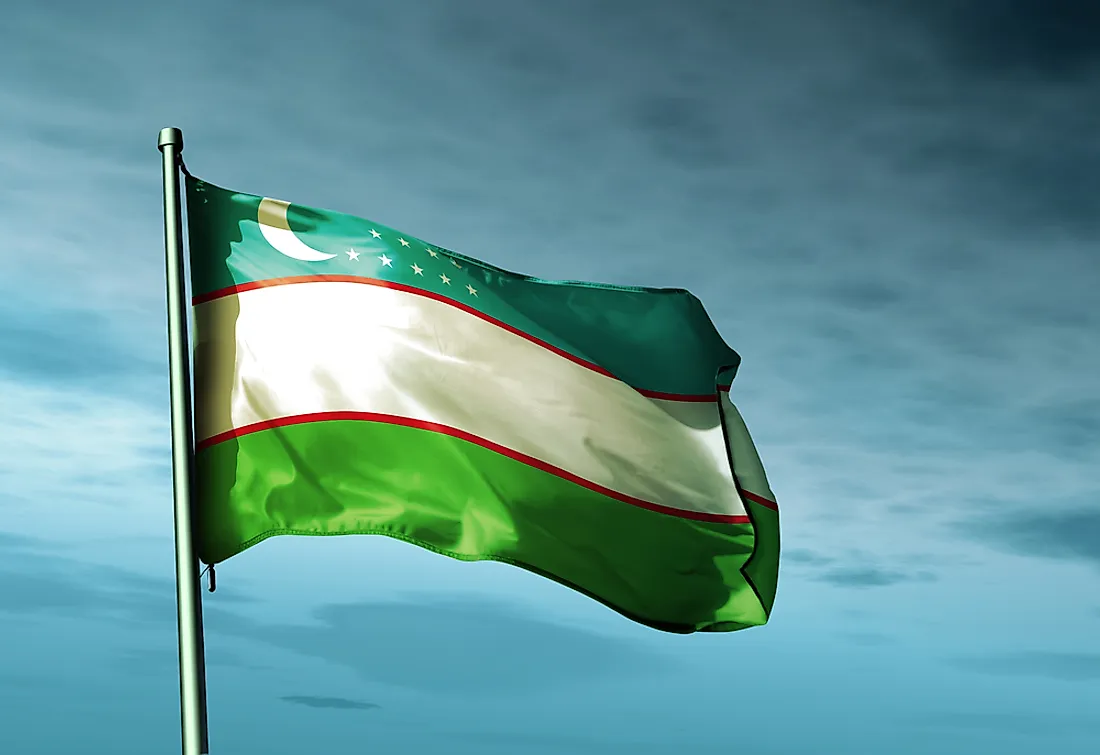Which National Flags Feature The Moon In Their Designs?

Countries use different symbols on their flags to signify different things. The symbols range from those that represent animate objects like animals and inanimate objects like physical features, astrological elements among others. One of the most common symbols found in most flags is the moon. Humanity has always been obsessed with the sky and everything in it. It, therefore, comes as no surprise that the objects in the sky have been incorporated as symbols of different flags. One such object is the moon that appears in the flags of different countries.
The Shape Of The Moon
The depiction of the moon comes in varying shapes and sizes. It goes through different phases; some flags use the crescent-shaped moon while others use the full moon symbol. The crescent shape is associated with Muslim countries in the Middle East and North Africa. The full moon is usually centrally placed in many flags although there are instances where it is set near corners and surrounded by other astrological symbols
Countries With The Moon In Their Flags
- Laos, which has three horizontal bands, two thin red stripes and a wider blue stripe in the middle. At the center is the shape of a white moon. The flag has been in use since 1945, and it is the only communist flag that does not bear the customary five-pointed star.
- Tunisia, which features a red moon and star enclosed in a white circle on a red flag.
- Singapore, whose crescent moon is in the top left corner of the flag.
- Nepal, where the crescent moon is subtly included near the top of the flag.
- Malaysia, whose crescent moon symbolizes the national religion of the country, Islam.
- Mongolia is another country with a flag featuring the moon, and the flag has three equal vertical stripes. A blue colored band sandwiched between red ones. On the hoist side of the flag is a yellow emblem that bears the shape of the moon that is part of a symbol called the Soyombo which is a geometric representation of the sun, the fire, earth, water, and the moon itself.
- Algeria, which uses a green and white striped flag with a red star and red crescent moon.
- Turkmenistan, whose flag uniquely features a patterned stripe as well as a crescent moon and five white stars.
- The flag of Niger also has the moon, and it has three regular horizontal orange, white, and green bands from top to bottom. At the center of the bands is the moon in orange color. The flag was adopted in 1959 after it gained independence from France.
- Brunei, whose moon is visible in the crest that is featured on the flag.
- The flag of Bangladesh has a red moon at the center of a dark green background, and the flag was adopted in 1972. The red moon signifies the blood shed by the people in the fight for independence. The green is for the lushness of the land.
- Mauritania's flag features a yellow crescent moon with yellow star.
- The flag of Palau is light blue with a yellow moon placed slightly off center. The blue shade represents the ocean which surrounds the small island; the flag has been in use since 1981 after the island broke away from the United Nations Trust Territory.
- Turkey which features a red flag with a star and a crescent moon.
- Azerbaijan, whose flag features blue, red, and green stripes as well as a crescent moon and a star.
- Libya, whose flag has stripes of red, black, and green with a white crescent moon and star in the center.
- Pakistan, whose flag is white and green with a crescent moon and white star.
- Uzbekistan, whose flag features a crescent moon.











